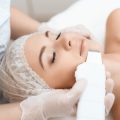Introduction to Laser Skin Resurfacing
Laser skin resurfacing is an advanced dermatological procedure designed to rejuvenate the skin by targeting imperfections such as fine lines, wrinkles, sun damage, and scarring. In the UK, this treatment has gained significant popularity due to its effectiveness and minimally invasive nature. Among the various laser technologies available, CO2 (carbon dioxide) and fractional lasers are considered the gold standards for achieving noticeable results with improved safety profiles. CO2 lasers work by emitting a concentrated beam of light energy that removes layers of damaged skin, stimulating collagen production and encouraging the growth of new, healthy tissue. Fractional lasers, on the other hand, deliver laser energy in a grid-like pattern, treating only a fraction of the skin at a time. This approach promotes faster healing and reduces downtime—a key consideration for busy UK patients who often seek treatments with minimal disruption to their daily lives. As awareness around skin health continues to grow across Britain, understanding the nuances between these laser modalities is crucial for anyone considering resurfacing procedures. Whether you are looking to address age-related concerns or improve overall skin texture, this comprehensive guide will provide you with an in-depth overview tailored specifically for UK patients, factoring in local trends, expectations, and regulations within the aesthetic industry.
2. How CO2 and Fractional Lasers Work
Understanding the science behind CO2 and fractional lasers is key to appreciating their effectiveness in skin resurfacing, especially within the context of UK aesthetic clinics. Both technologies utilise targeted light energy, but their mechanisms and benefits have distinct features that set them apart.
The Science Behind Laser Skin Resurfacing
CO2 lasers work by emitting a concentrated beam of carbon dioxide light, which is absorbed by water in the skin’s tissues. This process vaporises thin layers of damaged skin with precision, stimulating collagen production and promoting regeneration of healthy skin cells. Fractional lasers, on the other hand, divide the laser energy into thousands of microscopic treatment zones. This technique treats only a fraction of the skin at a time, leaving surrounding tissue intact to aid rapid healing.
Comparing CO2 and Fractional Lasers
| Treatment Type | Main Action | Typical Uses | Recovery Time | Common in UK Clinics? |
|---|---|---|---|---|
| CO2 Laser (Traditional) | Ablative – removes outer layers of skin | Deep wrinkles, scars, severe sun damage | 1–2 weeks | Yes, for intensive treatments |
| Fractional CO2 Laser | Ablative & Fractional – targets micro-zones | Fine lines, moderate scars, texture issues | 3–7 days (shorter downtime) | Very popular for balanced results & recovery time |
| Non-Ablative Fractional Laser | Fractional – heats without removing skin layers | Mild ageing signs, pigmentation, maintenance treatments | Minimal downtime (1–3 days) | Common for lighter rejuvenation procedures |
The Appeal in UK Aesthetic Clinics
The adaptability and safety profile of both CO2 and fractional laser technologies make them highly sought after across Britain. British patients often seek solutions that balance effective results with manageable recovery times—fractional approaches are especially appreciated for allowing individuals to resume daily life swiftly. Moreover, these technologies are suitable for a wide range of skin types commonly seen in the UK population.
Treating Skin Concerns Effectively
Beneath the technical details lies a straightforward objective: tackling visible signs of ageing, scarring, or sun damage while ensuring safety and reliability. By selectively targeting problem areas and encouraging natural healing processes, CO2 and fractional lasers have become mainstays in modern British cosmetic dermatology.

3. Benefits and Expected Outcomes
Laser skin resurfacing, particularly with CO2 and fractional lasers, has become increasingly popular in the UK for its ability to address a variety of common skin concerns. Most British patients seek treatment for fine lines, wrinkles, acne scars, sun damage, and uneven pigmentation—conditions that are frequently encountered due to the UK’s varied climate and cultural emphasis on maintaining a healthy appearance.
Noticeable Improvement in Fine Lines and Wrinkles
The most immediate benefit reported by patients across clinics from London to Manchester is the softening of fine lines, especially around the eyes (crow’s feet) and mouth. Many individuals in their late thirties to fifties note that after a single session of CO2 or fractional laser resurfacing, their skin appears smoother and more youthful. This result often helps boost self-confidence, particularly as many Britons value a natural yet refreshed look rather than dramatic changes.
Reduction of Scarring and Pigmentation
British dermatologists frequently recommend laser resurfacing for those struggling with acne scarring—a prevalent concern among both younger adults and older individuals who have experienced persistent breakouts. Patients often share personal stories about feeling self-conscious at work or social events due to visible scars. After undergoing fractional laser treatments, many describe a significant reduction in scar depth and redness within several weeks. Likewise, those dealing with sunspots or age-related pigmentation (sometimes called liver spots) notice marked improvements in skin tone and clarity. This is particularly relevant given the unpredictable British weather, which can exacerbate pigmentation issues through intermittent sun exposure.
Typical Personal Experiences from UK Clinics
Across various NHS and private clinics in cities like Birmingham, Edinburgh, and Bristol, feedback tends to be consistent: patients appreciate not only the visible results but also the relatively short recovery times associated with modern fractional techniques. For example, one patient from Surrey shared that after years of trying topical creams for her acne scars with little success, just two sessions of fractional CO2 laser made “an obvious difference,” reducing her need for heavy foundation makeup.
Balanced Expectations
It’s important to highlight that while most patients report positive outcomes, results can vary based on individual skin type, severity of concerns, and adherence to aftercare instructions provided by UK practitioners. Typically, optimal improvement is seen over several months as new collagen forms beneath the surface. British clinics emphasise realistic expectations: while dramatic transformation is possible, subtlety and gradual enhancement are often considered preferable within UK aesthetics culture.
4. Considerations for UK Skin Types and Tones
Laser skin resurfacing outcomes can vary considerably based on an individual’s skin type and tone, which is particularly relevant given the diversity present across the UK population. Understanding how different British skin types—ranging from fair to deep complexions—respond to CO2 and fractional laser treatments is crucial for both safety and efficacy.
Understanding the Fitzpatrick Scale in a UK Context
The Fitzpatrick Skin Type scale is commonly used by practitioners to assess potential risks and tailor treatment plans. Below is a practical overview of how various skin types typically seen in the UK respond to laser resurfacing:
| Fitzpatrick Type | Description (UK Context) | Laser Response | Practitioner Recommendations |
|---|---|---|---|
| I-II | Pale white, burns easily, freckles common (e.g., Irish, Scottish heritage) | Generally good candidates, but higher risk of redness and post-treatment sensitivity | Lower energy settings; diligent sun protection post-procedure |
| III-IV | Light olive to medium brown, sometimes tans (e.g., Mediterranean, South Asian backgrounds) | Moderate risk of pigmentation changes, especially hyperpigmentation | Fractional lasers preferred; pre-treatment skin conditioning often advised |
| V-VI | Darker brown to black skin tones (e.g., Afro-Caribbean, African, South Asian) | Higher risk of post-inflammatory hyperpigmentation and scarring | Use of non-ablative or low-energy fractional lasers; extended patch testing recommended |
Bespoke Approaches by Local Practitioners
UK practitioners often recommend a customised approach based on not just Fitzpatrick type but also personal and family history of pigmentation disorders, recent sun exposure, and previous cosmetic procedures. Some tailored strategies include:
- Pretreatment Regimens: Using pigment inhibitors or mild retinoids for several weeks before treatment can reduce risk of uneven pigmentation, particularly for patients with types III-VI.
- Patch Testing: Patch tests are standard practice across reputable UK clinics to ensure suitability and minimise adverse reactions.
- Cultural Sensitivity: Practitioners in multicultural areas may have experience addressing specific concerns such as melasma in South Asian patients or keloid tendency in Afro-Caribbean individuals.
Managing Expectations: A Collaborative Process
A thorough consultation with a qualified UK-based practitioner will involve realistic discussions about expected downtime, potential side effects like temporary redness or swelling, and the likelihood of pigmentary changes. Patients are encouraged to share their full medical and cosmetic history to allow for the safest possible plan.
5. What to Expect: The Patient Journey
Step 1: Initial Consultation
Your journey with laser skin resurfacing in the UK begins with an initial consultation. Whether you choose an NHS facility (rare for cosmetic purposes) or a private clinic, this step is essential. During the consultation, a qualified practitioner—typically a dermatologist or aesthetic doctor—will assess your medical history, discuss your skin concerns, and determine if CO2 or fractional laser treatment is suitable for you. You’ll have the opportunity to ask questions about expected results, risks, and costs. In private clinics, you may also receive written information or brochures outlining the procedure.
Step 2: Patch Testing
Before proceeding with full treatment, patch testing is standard protocol across reputable UK clinics. This involves applying the laser to a small area of skin to check for adverse reactions or excessive sensitivity. The patch test typically takes place at least 24–48 hours before your main session. Clinics are required to record the results in your patient notes as part of their duty of care and compliance with Care Quality Commission (CQC) guidelines.
Step 3: Preparation Before Treatment
If you pass the patch test, your clinic will provide pre-procedure instructions. These may include avoiding sun exposure, stopping certain medications (such as retinoids), and using specific skincare products to prepare your skin. You’ll be advised not to use fake tan or exfoliants in the days leading up to your appointment. On the day itself, you should arrive with clean, makeup-free skin.
Step 4: The Laser Procedure
The actual laser session takes place in a controlled clinical environment. After confirming your consent and comfort, the practitioner will cleanse your skin and may apply a topical anaesthetic for comfort. The duration of the procedure varies depending on the treatment area but generally lasts between 30 minutes and two hours. Most UK clinics use advanced equipment that meets national safety standards. You might feel warmth or tingling during the process; practitioners often use cooling devices to minimise discomfort.
Step 5: Immediate Aftercare
Right after treatment, expect redness, swelling, and possibly some pinpoint bleeding—these are normal responses. Your practitioner will apply soothing ointments and give you detailed aftercare instructions. These typically include advice on gentle cleansing, moisturising, avoiding sun exposure, and what products to avoid during recovery. Many clinics provide a written aftercare sheet and recommend specific over-the-counter products available from UK pharmacies like Boots or Superdrug.
Step 6: Follow-Up Appointments
Follow-up appointments are standard practice in both NHS (if medically indicated) and private settings. Your first review usually occurs within one to two weeks post-procedure to monitor healing and address any complications such as infection or delayed wound healing. If further sessions are required for optimal results, these will be scheduled at safe intervals according to UK protocols.
Step 7: Long-Term Care & Support
Your clinic should offer ongoing support throughout your recovery period. This includes open lines of communication via phone or email for any concerns between visits. Some private clinics also offer annual reviews or touch-up treatments at preferential rates for returning patients. It’s important to follow all recommendations regarding sun protection and skincare long-term to maintain your results and minimise risks of pigmentation changes—especially relevant given Britain’s variable climate and seasonal UV exposure.
6. Risks, Safety, and Regulations in the UK
A Thorough Look at Potential Side Effects
While laser skin resurfacing (including CO2 and fractional technologies) is generally considered safe when performed by qualified professionals, patients should be aware of possible side effects. Common temporary reactions include redness, swelling, mild discomfort, and peeling. Less frequently, there can be risks such as infection, prolonged erythema (redness), pigmentation changes (hyperpigmentation or hypopigmentation), scarring, or reactivation of herpes simplex virus. Darker skin types may have a slightly higher risk of pigmentary changes. It is vital to follow all aftercare instructions provided by your practitioner to minimise these risks.
Safety Considerations for UK Patients
Ensuring your safety starts with choosing a reputable clinic and practitioner. In the UK, not all clinics are held to the same regulatory standards, so it is essential to do your due diligence. Always confirm that your treatment will be conducted by a trained medical professional who can assess your suitability for laser resurfacing and manage any complications if they arise. Pre-treatment consultations should include a full medical history review, patch testing where appropriate, and clear explanations of potential outcomes and aftercare requirements.
UK Regulations and Professional Standards
CQC Registration
The Care Quality Commission (CQC) regulates independent clinics in England that provide certain types of cosmetic treatments, including laser procedures if they involve surgical intervention or the use of prescription-only medicines. While not every aesthetic laser clinic requires CQC registration, those offering more advanced treatments often do. Always check whether the clinic is CQC registered for added assurance regarding governance and patient safety standards.
GMC Guidance
If your laser treatment is administered by a doctor, they should be registered with the General Medical Council (GMC). The GMC sets rigorous standards for ethical practice and clinical competence. Doctors are expected to obtain informed consent, maintain clear records, communicate risks effectively, and act in the best interests of their patients at all times.
Other Regulatory Bodies
In addition to the CQC and GMC, practitioners may also be members of professional bodies such as the British Association of Dermatologists (BAD), British Association of Plastic, Reconstructive and Aesthetic Surgeons (BAPRAS), or the Joint Council for Cosmetic Practitioners (JCCP). Memberships demonstrate a commitment to ongoing training and adherence to high clinical standards.
How These Safeguards Protect You
UK regulations and robust professional standards exist to safeguard patient welfare at every stage—from consultation through to aftercare. They ensure practitioners are appropriately qualified, adhere to evidence-based protocols, and maintain transparency around risks and benefits. As a patient considering laser skin resurfacing in the UK, always verify practitioner credentials and clinic compliance with relevant regulatory frameworks before proceeding with treatment.
7. Selecting the Right Provider in the UK
Choosing a qualified and trustworthy provider is crucial for the safety and success of your laser skin resurfacing journey. The UK has strict regulations surrounding cosmetic procedures, but standards and expertise can still vary widely between practitioners and clinics. Below are practical steps and considerations to help you make an informed decision.
Checking Credentials and Qualifications
Ensure your chosen practitioner is registered with the General Medical Council (GMC) if they are a doctor, or with the Nursing and Midwifery Council (NMC) if they are a nurse. Many reputable practitioners will also be members of professional organisations such as the British Association of Dermatologists (BAD) or the British College of Aesthetic Medicine (BCAM). Verify that the clinic is Care Quality Commission (CQC) registered, which indicates adherence to high standards of safety and hygiene.
Key Questions to Ask During Consultation
- How many years’ experience do you have with CO2 and fractional laser treatments?
- Can I see before-and-after photos from previous UK patients?
- What type of lasers do you use, and why are they suitable for my skin type?
- What risks or complications should I be aware of, specifically for my skin tone or medical history?
- What aftercare support do you provide post-procedure?
Expectations for Aftercare and Support
A responsible provider will offer detailed aftercare instructions tailored to your individual needs. This includes guidance on managing redness, swelling, sun protection, and what products to avoid during healing. Expect scheduled follow-up appointments to monitor your recovery. Inquire about out-of-hours support in case you have concerns or complications after treatment.
Red Flags to Watch Out For
- Lack of visible credentials or reluctance to share qualifications.
- Poor reviews on independent platforms such as Trustpilot or Google Reviews.
- No clear information regarding risks, downtime, or realistic outcomes.
- Pushing unnecessary add-ons or making unrealistic promises.
Investing time in selecting a reputable UK-based provider increases your chances of a safe procedure and satisfying results. Remember: it’s not just about the technology but also about the skill, experience, and ongoing care offered by your practitioner.

